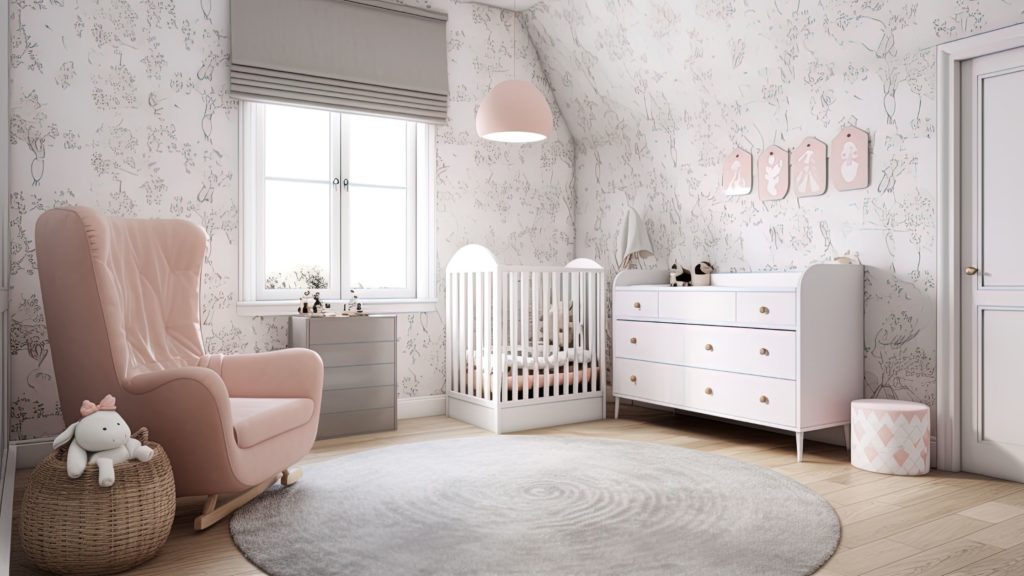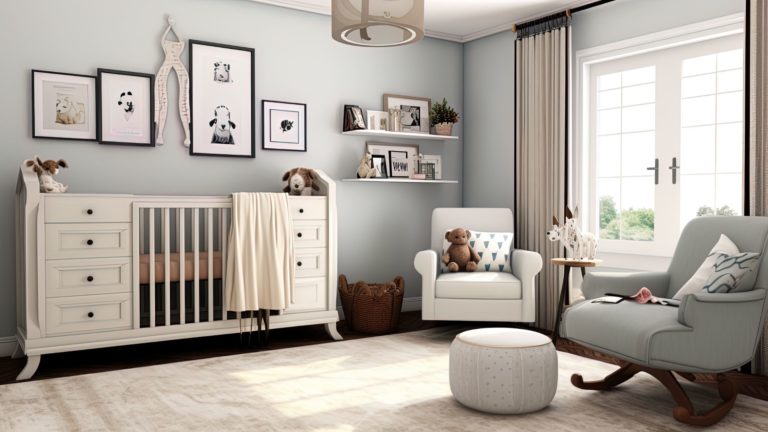Designing the perfect child’s room is no simple task. It’s a journey that weaves together practicality, innovation, and safety measures. Today, we dive deep into the intricacies of crafting a space that ensures a child’s wellbeing while fostering an environment ripe for creativity and learning.
The Cornerstone of Design: Practical Functionality
Understanding a child’s room goes beyond acknowledging it as a mere space for sleep. It serves manifold purposes: a playground, a learning corner, and a realm for dreams.
- Adaptable Furniture: The key lies in foresight. Investing in furniture that evolves with the child’s growing needs ensures long-term utility. Beds with storage solutions, extendable desks, and modular shelves are choices that can be reshaped as requirements change.
- Spatial Efficiency: Ample floor space remains crucial. A child’s room, crowded with furniture, limits mobility. Hence, prioritizing an efficient layout is essential. Keeping a generous play area today could morph into a study or hobby zone tomorrow.
- Material Durability: Childhood often comes with spills, scratches, and other unpredictable events. Furnishings that stand the test of time, resilient against wear, are a worthy investment.
Safety: The Unwavering Priority
When it comes to a child’s personal space, ensuring safety is non-negotiable.
- Hazard-Free Choices: Choosing paints and materials free from harmful chemicals is vital. Children can often be inquisitive, and the room should only inspire curiosity, not health concerns.
- Furniture Safety: It’s crucial to anchor tall or heavy furniture. This reduces risks and ensures a safe environment, especially for toddlers who are still finding their footing.
- Cord Management and Outlet Safety: Dangling cords or accessible electrical outlets can pose severe threats. Keeping them concealed or childproof safeguards against unforeseen incidents.
A Canvas for Creativity: Making Room for Fun
A child’s space should inspire. It should be a canvas where dreams take shape and creativity knows no bounds.
- Innovative Wall Solutions: Go beyond conventional paints. Walls that children can draw on, like chalkboard paints or magnetic surfaces, can transform the room into a dynamic space.
- Thematic Inspirations: Themes can ignite imagination. Whether it’s the vast cosmos, a dense jungle, or a serene beach, themes offer a unique personality to the room, making it truly theirs.
- Personalized Corners: Each child is unique, and their room should reflect that. A corner for the avid reader, a space for the budding artist, or even a small stage for the performer can make the room a testament to their individuality.

Seamlessly Merging Elements: Achieving Cohesiveness
While individual aspects are vital, the beauty lies in harmoniously merging them.
- Harmonious Colors: While children adore vibrant shades, it’s essential to have an overarching color scheme that lends an air of calm and cohesiveness.
- Future-Proof Design: Interests and preferences evolve. Having elements that are easily switchable ensures the room remains relevant. Think removable decals or multi-functional furniture pieces.
- Clarity Over Clutter: It’s tempting to go overboard with decor and toys. However, a room with clear spaces and fewer, quality items encourages a child to value and care for their belongings.
Extending the Design Journey: Beyond the Basics
As we’ve traversed the intricate landscape of designing a child’s room, it’s apparent that the quest doesn’t stop at just the rudimentary elements. It’s about envisioning a space that grows, morphs, and evolves—just like the child it shelters.
Incorporating Educational Elements
While we lay emphasis on fun and creativity, the room should also subtly foster learning and cognitive development.
- Interactive Learning Walls: Consider adding an educational wall decal that displays the world map, solar system, or even the periodic table in vibrant colors. Such installations make learning organic and integrate seamlessly into play.
- Book Nooks: While we may be in a digital age, nothing beats the tactile joy of turning a book’s pages. A well-stocked bookshelf or a cozy reading corner can instill a lifelong love for reading.
- Puzzle Corners: A section dedicated to puzzles, building blocks, or even board games can aid in developing problem-solving skills and critical thinking.
The Power of Natural Elements
Nature has an unparalleled calming effect, especially in a space where a child spends a significant amount of time.
- Natural Light: Ensure the room gets ample sunlight. Not only does it elevate mood, but it’s also vital for health. Window treatments that allow light filtration while ensuring privacy are a must-have.
- Green Touches: Incorporate indoor plants that are safe for children. They purify the air and introduce kids to the responsibilities of caring for another living being.
- Nature-Inspired Decor: Elements like wooden furniture, stone finishes, or nature-themed wallpapers can infuse a calming, earthy ambiance.
Tech Integration: The Modern Child’s Companion
In an era driven by technology, integrating smart yet safe tech solutions can be a game-changer.
- Smart Lighting: Color-changing LED lights or ones that can be controlled via apps add an element of fun while providing practical solutions for varied lighting needs.
- Learning Tablets and Devices: Designated spaces or docks for devices like learning tablets ensure they have their place, and screen time can be monitored.
- Safety Tech: Consider investing in baby monitors or security cameras for older kids to ensure their safety, especially when they are alone.
Wrapping It Up: The Room as a Reflection
Every detail, no matter how minuscule, contributes to crafting a sanctuary that resonates with a child’s essence. It’s not just about aesthetics or functionality—it’s about creating a space that mirrors their hopes, dreams, and aspirations.
To echo a sentiment, the design journey of a child’s room is a labor of love, an embodiment of care, and a testament to the vision of a nurturing environment. It stands as a symbol of a space that celebrates the past, cherishes the present, and eagerly anticipates the future.
Conclusion
Crafting a space for children is both an art and a science. It demands an understanding of their current needs while anticipating future ones. By meticulously integrating functionality, safety, and fun, we can architect a haven that is not only a space for rest but also a crucible for dreams, learning, and growth.
As parents or guardians, the responsibility is immense. But, with thoughtful choices and a keen eye for detail, we can create a room that stands as a testament to our love and dedication, ensuring our children not only sleep but thrive in their personal space.


